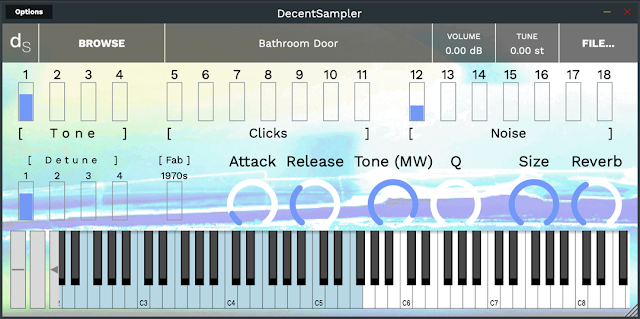Okay. So you've spent ages reading and watching everything you can about that amazing bit of hi-tech gear that you've wanted for ages. You finally manage to get enough money together to buy it, and you go through the hell of going to the web-site of your favourite supplier, adding it to your basket, filling in all your details, and checking out - very aware this is a lot of your real money. Then there's the awful wait whilst it is travelling to you, and the agonising wait for the courier to deliver it. And then the unboxing...
And here you are. New item on the table. However, unlike those confident reviewers who persuaded you to buy it with all of their amazing knowledge and demos and tips, this is all really and totally new to you. You don't know what to do, how to connect it up, where the web-site is, how you turn it on, what you do first, and it is very SCARY!
What you need is a video that is the exact opposite of the detailed, complex video review that impressed you with how amazing the gear was. What you need now is something that starts simple, and stays simple. Doing the basic things like connections, power up, web-site navigation, and what to do first. Reviewers never show you these things - because to them it is all obvious. But this is your new bit of gear, and you have no idea where to start!
Here is the 'First Time' video that I did for Rebel Technology's Witch polyphonic synthesizer (and more) module:
It is deliberately not a review (although you can see my review here...). it sets out to show you how to make the audio connections, what web-site to visit to use the Witch, how to connect the Witch to a computer, how to use the web-site, how to select a patch, how to change volume, how to control patches, and essentially get you started for that first time.
Hi-tech music gear these days is often very complex, has lots of functionality, requires a computer to get the most out of it, and this can all be overwhelming. What this video aims to do is to be an antidote to all of that mountain of 'stuff', and instead, to provide a simple introduction. Once you've got the hang of the Witch, then you may never watch this video again, but for that first time, when you have no idea where to start at all, then this is the 'first' video.
---
Whilst this video is very specific to the Rebel Technology Witch, the principles behind what is inside the video are very universal. Lots of hi-tech music gear comes in a box without a manual (you are expected to print that out), and often without any 'Getting Started' sheet, or even a URL so you know what web-site to go to... I have become very aware of this 'minimalist' trend, and this video is my attempt to provide an example of an alternative - a video that helps new users with those first few tentative steps. The idea is that the box just needs to have a small piece of paper with the URL for the video printed on it.
And that's it. Expensive, complex and deep are all very daunting things to get in a package - and there's a lot of self-imposed (and external) pressure for you to become proficient very quickly and without any obvious effort. The reality is often not quite as easy. Life isn't a movie where a quick montage of shots of you looking and learning will turn you into an expert in a few seconds. Real life can be messier, slower, and definitely requires effort. This type of video aims to reduce some of the stress of that 'First Time', and to ease you into getting proficient with that amazing piece of hi-tech gadgetry that you have bought!
---
https://witch.rebeltech.org/ - THE page to visit!
https://youtu.be/KoLwYPXI31Q - The 'First' video (as described here!)
https://www.rebeltech.org/product/witch/ - Product stuff https://youtu.be/ebWkIeXFusg - Unboxing
#rebeltechwitch. - the hashtag
---
Synthesizerwriter's Store (New 'Modular thinking' designs now available!)
 Buy me a coffee (Encourage me to write more posts like this one!)
Buy me a coffee (Encourage me to write more posts like this one!)








